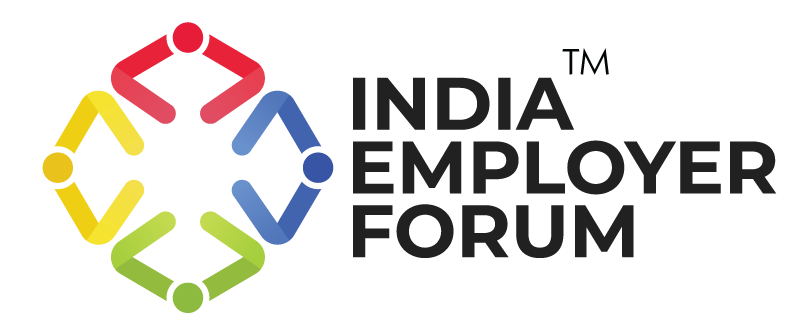What is the optimum formula to achieve economic development and prosperity for all?
Economic prosperity is often held up as the ultimate goal of any nation-state—a sign that the ship of progress is sailing steadily. But what happens when the very engine of this growth is fueled by the burnout of its people? China’s infamous 9-9-6 work culture—working 9 a.m. to 9 p.m., six days a week—has sparked global debate, not just about labour rights, but about the deeper question: What is the purpose of development if it doesn’t enhance the quality of life of its people?
China’s meteoric rise to become the world’s second-largest economy is nothing short of extraordinary. Since the late 1970s, China has lifted more than 800 million people out of poverty, reducing its extreme poverty rate from 88% in 1981 to less than 1% by 2019, as reported by the World Bank. In just a few decades, the country has evolved from an agrarian economy to a global manufacturing powerhouse, with cities like Shanghai and Beijing, which are heralded as symbols of modernity and innovation.
Central to this transformation has been the 996 work culture—working 9 a.m. to 9 p.m., six days a week—which has become synonymous with the high-speed Chinese economic machine. This model, endorsed by leading tech entrepreneurs like Jack Ma of Alibaba and Pony Ma of Tencent, has been promoted as the key to success in a competitive, globalised market. The aggressive push for long hours and hard work is seen as a necessary sacrifice for personal and national advancement.
While China’s economic statistics are impressive, the human cost of this model is becoming increasingly apparent. In 2024, China’s GDP per capita stood at approximately $12,969—a remarkable leap from just $155 in 1978—but this progress has come at the expense of mental and physical health for many workers. According to a 2022 study by the Chinese Academy of Social Sciences, over 40% of young professionals in cities like Shanghai and Beijing report chronic stress and fatigue due to the overwhelming demands of the 996 work culture. The “996.ICU” movement—referencing the potential for workers to end up in an intensive care unit due to overwork—has become a rallying cry for those challenging the status quo. With such stress, the long-term sustainability of China’s growth model is under intense scrutiny.
India’s Slower, Inclusive Growth: A Different Approach
In contrast to China’s high-pressure economic approach, India has taken a slower, more inclusive path to development, grounded in democracy and decentralisation. While India’s economic growth has not been as rapid or uniform as China’s, it has made significant strides in reducing poverty, improving access to education and healthcare, and fostering a growing tech-driven economy.
Since the early 2000s, India has embarked on a digital transformation, implementing world-leading infrastructure programs such as the Aadhaar biometric ID system, which now registers over 1.3 billion citizens. Through initiatives like Jan Dhan (financial inclusion) and UPI (Unified Payments Interface), India has dramatically improved access to banking and social welfare, lifting over 415 million people out of poverty between 2005 and 2021, according to the UNDP report.
In terms of poverty alleviation, India has made significant progress: its multidimensional poverty rate dropped by over 50% in just 15 years. The country’s GDP per capita in 2023 stood at $2,485—far lower than China’s, but still a notable improvement over previous decades. India’s internet penetration reached over 886 million, contributing to the growth of the digital economy. The country’s UPI platform, which processes over 10 billion digital transactions every month, is an example of how technology can be leveraged to enhance inclusivity.
Work Culture: The Trade-off Between Hustle and Humanity
While China’s 996 culture has been central to its rapid industrialisation, India’s work culture has followed a different, more flexible path. On average, Indian workers log around 47.7 hours per week, which is relatively moderate compared to China’s 60-70 hours per week. However, a significant portion of India’s workforce—over 80%—is engaged in informal employment, where long working hours are not as institutionalised but are still prevalent in certain sectors like construction, agriculture, and domestic work.
At the same time, the rise of India’s startup ecosystem has seen an increasing number of businesses adopt flexible work hours. Companies like Zerodha and Meesho have cultivated a work environment that prioritises productivity and well-being over long hours, offering employees the flexibility to work remotely and maintain a healthier work-life balance. India’s digital entrepreneurship is thriving without the need for a 996 culture, proving that innovation can flourish without the sacrifice of personal time.
India’s relatively slower-paced work culture, however, has its own set of challenges. Income inequality remains high, with the top 10% of earners controlling 57% of national income. Additionally, India’s female labour force participation remains alarmingly low at just 24%, one of the lowest globally. Bridging these gaps, improving the quality of employment, and creating more formal jobs are all vital steps India needs to take as it continues its march toward economic prosperity.
Can India Catch Up Without Burning Out?
Yet, India also faces a dilemma: Can it catch up without adopting China’s relentless model? Or can it build a path to prosperity that preserves human dignity and well-being? As India aspires to become a $5 trillion economy, some voices argue that there’s no substitute for hard work. Narayana Murthy, founder of Infosys and a respected figure in India’s tech sector, recently stirred a debate when he said that India’s youth should be prepared to work “70 hours a week” to boost national productivity. According to him, India lags behind not in talent, but in output, and bridging this gap will require an intense commitment to effort, much like what China’s 996 model demands.
India’s economic future doesn’t necessarily have to follow the same path as China’s. The country is uniquely positioned to leapfrog traditional models of growth by leveraging its digital infrastructure, expanding its manufacturing base, and investing in human capital. By focusing on increasing employment, enhancing education, and improving employability, India can create an environment where growth is accompanied by personal fulfilment.
To meet its economic milestones and deliver economic prosperity for its people, India must get out of the low-wage, low-productivity trap by setting up policies and infrastructure in place that encourage job creation so that there are sufficient jobs for its workforce. It must also deliver higher productivity and improve the quality of deliverables by implementing the correct mix of technology and skilled workers, making it competitive on the global stage. India must reimagine its existing structures and regulations to enhance employment opportunities and repair the gap between education and employability. This will help the country to grow its economy without the burden of excessive hours.
A New Model for Prosperity: Balancing Progress and Well-being
The China success story, powered by its intense work culture and centralised economic planning, is now being questioned with respect to the model’s long-term sustainability and the impact on individual well-being. India, on the other hand, has embraced a more inclusive and democratic approach. Looking ahead, India must continue to persist with this balanced approach and leverage the developments in technology to enhance productivity and create high-wage jobs for its people. If India can align economic policies with the growth aspirations of its population—not just for wealth, but for dignity, meaning, and balance—it might just prove that the next global superpower doesn’t have to burn out its people to thrive and prosper.






